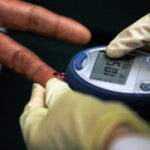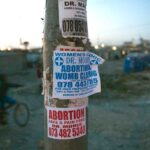More women are having C-section births in SA, but authors of the 2013/2014 District Health Barometer warn that this increase is “a matter of concern”.
The inability of labour ward staff to interpret medical technology used to monitor the foetal heart beat during child birth, and the lack of skilled midwives who can perform assisted deliveries have led to South Africa’s cesarean section (C-section) rate having doubled since 2000/2001.
That’s according to the 2013/2014 District Health Barometer, published by the non-governmental organisation, Health Systems Trust, that was released on Wednesday.
One out of four women deliver their babies via C-section, according to the barometer: 23.9% in the public sector and 73.9% in the private sector. This is compared to a national rate of 12.5% in 2000/2001.
Barometer authors warn that this rate is “unnecessarily high and a matter of concern”. The authors state: “Bleeding during and after C-sections remains one of the leading causes of maternal deaths due to obstetric haemorrhage.”
Health department figures show that 8% of maternal deaths in the public sector due to haemorrhage were as a result of women bleeding during C-sections. Twenty seven percent of these deaths can be ascribed to women bleeding after C-sections.
Experts in the public health field also say that few people in the state sector are qualified to administer anaesthesia, which leads additional C-section related complications.
High risk cases
According to the World Health Organisation, Kenya has a C-section rate of 4%, India 8.5%, Ghana 6.9% and Zimbabwe 4.8%.
Other reasons that the Barometer says contribute to South Africa’s high C-section rate include doctors who delay in attending to obstetric emergencies and those who prefer to do scheduled C-section deliveries, rather than assisted natural births.
Late antenatal clinic bookings (after 20 weeks of pregnancy) also result in high risk cases not being identified early enough for safe natural births.
Though the number of women attending antenatal care has increased from 8% to 50%, which is the highest level since the early 2000s, this is still short of the government target of 60%.

Ina Skosana was a health reporter at Bhekisisa.





